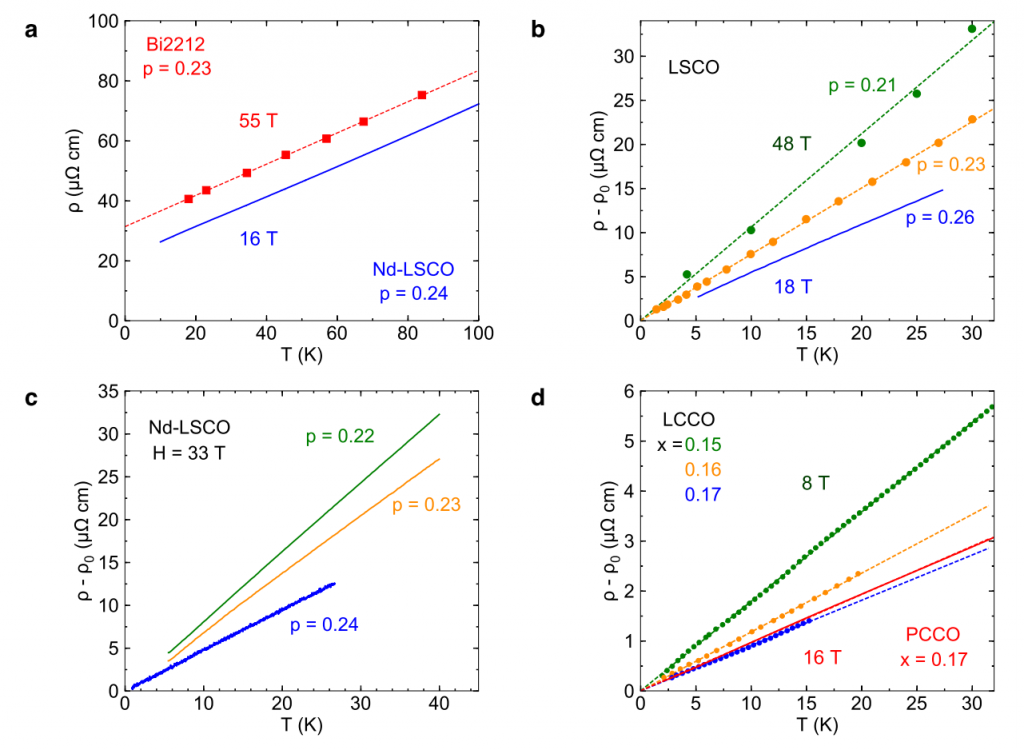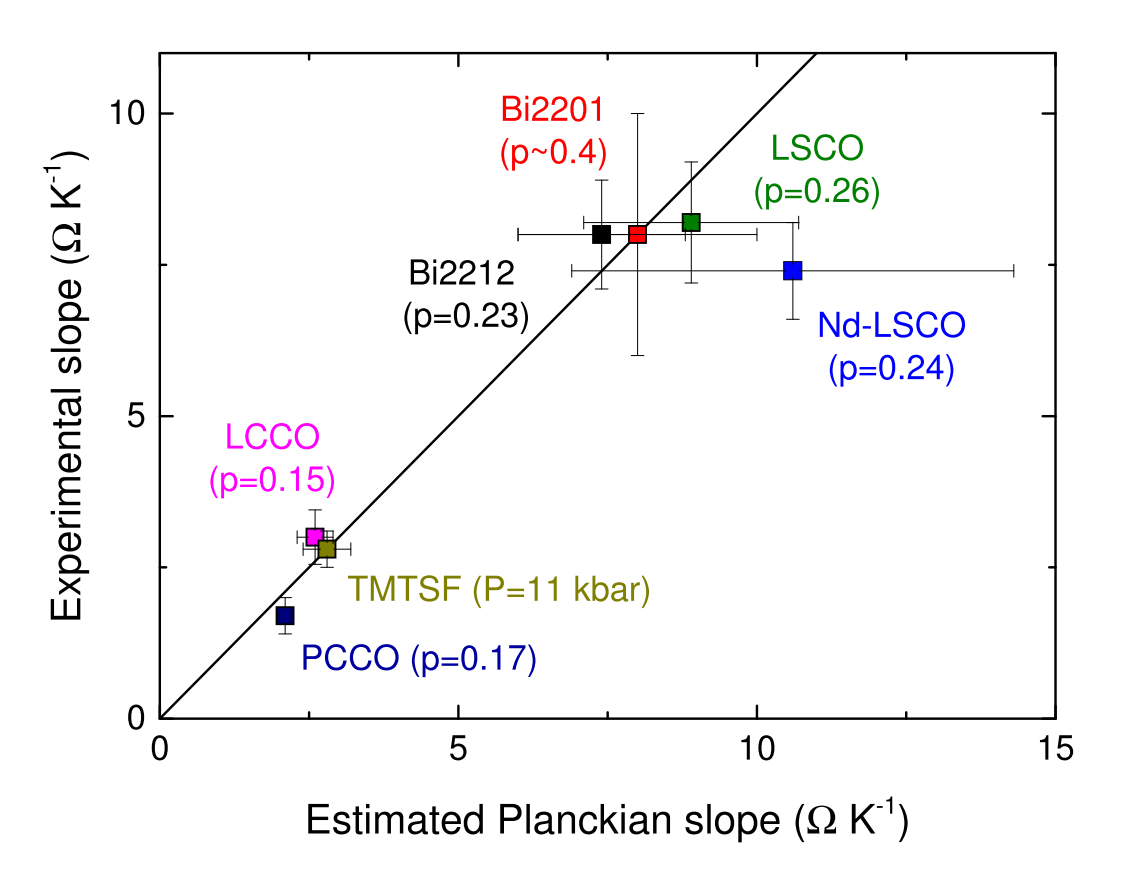Cyril Proust, LNCMI-Toulouse and Louis Taillefer, University of Sherbrooke
Measuring the electrical resistance of a new material is often the first experiment that researchers do, but also often the last to be understood. Nevertheless, the temperature dependence of the electrical resistance gives essential information on the ground state of materials. Whereas in usual metals the resistance exhibits a T2 dependence at low temperature, some compounds called quantum materials show a linear temperature dependence of their resistance. This is the case for the cuprates where such a linear dependence has been observed in a wide range of doping, corresponding to a phase called “strange metal”. Strong electronic interactions are certainly at the origin of this phenomenon, but no consensual explanation has been found to date. To address this issue, a group of EMFL-T and Canadian researchers have measured the resistivity of thin films of Bi2 Sr2 CaCu2 O8+δ in magnetic fields up to 60 Tesla. The latter weakens the superconductivity significantly and reveals the underlying properties of the material. It was observed that the electrical resistivity remains linear down to very low temperatures. This result shows first of all the universal character of this remarkable behavior over a wide temperature range (Figure 1). In addition, a quantitative analysis of the linear term of the resistivity in several cuprate families has revealed a universal mechanism called Planckian dissipation, a consequence of quantum physics which says that the minimum time to dissipate energy is given by the Heisenberg uncertainty (Figure 2). This limit implies that the electron scattering rate ℏ/τ is simply given by kB T. This behavior appears at the same doping level as the superconductivity, which suggests that the mechanism at the origin of the Planckian dissipation is also at the origin of the electronic interaction giving rise to high-temperature superconductivity. This mechanism is certainly the consequence of a new quantum state of matter in these materials. A similar mechanism, called minimal viscosity, is also encountered in the quark-gluon plasma and the most recent theoretical developments, called holography, are at the boundary between strongly correlated electron systems, string theory, black-hole physics, and the theory of quantum information. Progress in these latter disciplines could therefore directly benefit the understanding of systems where electronic correlations are strong, such as the cuprates.

Figure 1: Experimentally observed temperature dependence of
the resistivity of different cuprate superconductors, submitted to
high magnetic fields.

Figure 2: Experimental versus predicted slope of the linear
temperature dependence of the resistivity of different superconductors. The solid line corresponds to a slope of unity.
Universal T-linear resistivity and Planckian
dissipation in overdoped cuprates, A. Legros,
S. Benhabib, W. Tabis, F. Laliberté, M. Dion, M. Lizaire,
B. Vignolle, D. Vignolles, H. Raffy, Z. Z. Li, P. Auban-Senzier,
N. Doiron-Leyraud, P. Fournier, D. Colson, L. Taillefer, and
C. Proust, Nat. Phys. (2018);
https://doi.org/10.1038/s41567-018-0334-2







Leave A Comment
You must be logged in to post a comment.